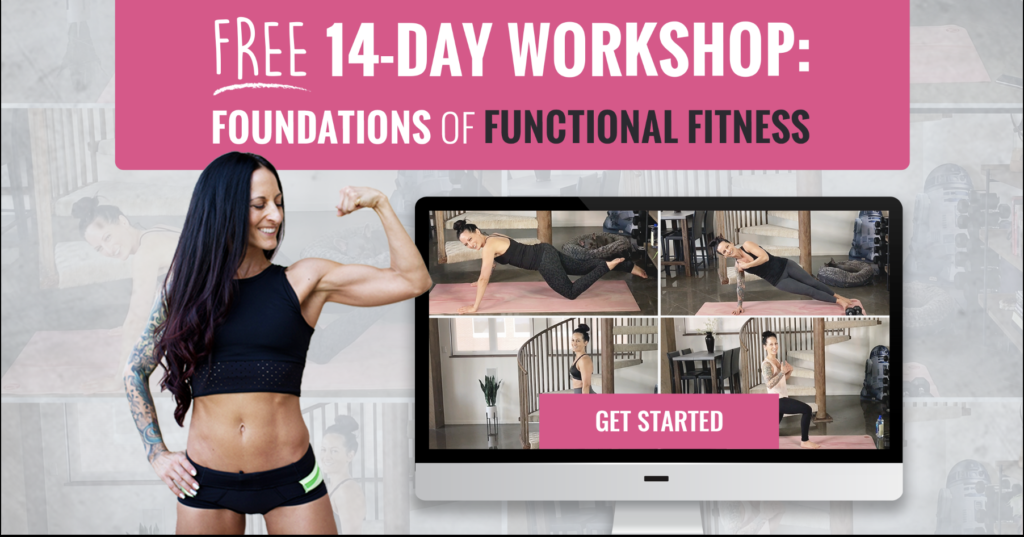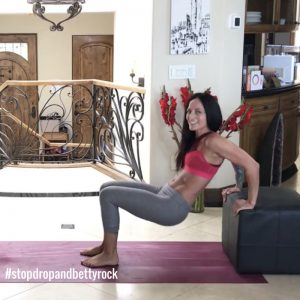 In this post:
In this post:
- I. Benefits of resistance training
- II. Different resistance training options
- Bodyweight training
- Weight training
- III. What’s the best way to train?
- IV. Training tips
Resistance (or strength) training is exercise where your muscles contract against a force.
This force could be gravity and your own bodyweight – like in the picture of me doing triceps dips using my own body weight to resist against gravity (the ottoman increases the distance from me to the floor and increases the resistance). This force could also be a dumbbell, a weight machine, a giant tire or any object that you’re exerting force against.
You can do resistance training just about ANYWHERE – the versatility reaches from the gym to the comfort of your very own home – and let’s not forget, you’re doing it every time you shovel snow, pick up your kids or pets, carry your groceries, and any number of daily activities that require muscular strength.
I. Benefits of Resistance Training
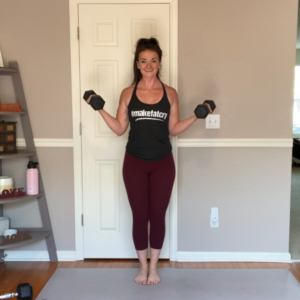
Resistance training increases muscular strength, and increasing the health and strength of our muscle tissue is beneficial for many reasons, including increased immune function, more efficient fat burning, joint support and more.
When working against a force, your body releases Human Growth Hormone (HGH) which is essential for muscle growth and optimizing metabolic function (1, 2). Sometimes called the “fitness hormone” HGH helps to maintain healthy body tissue and plays a role in cell regeneration – so it’s essential for the recovery process after you’ve worked out.
Resistance training will not only make you stronger, but you’ll sleep better (3), experience cardiovascular health (4), and greater mental health (5). You will reap those benefits when you train in balance with rest and recovery, prioritize getting to bed on time, eating whole foods, and managing stress.
How muscle growth works, in a nutshell:
Muscles working against a progressively challenging load leads to increases in muscle mass – a process referred to as hypertrophy. Hypertrophy is a thickening of the muscle fibers, creating larger, stronger muscles to tolerate an increased load.
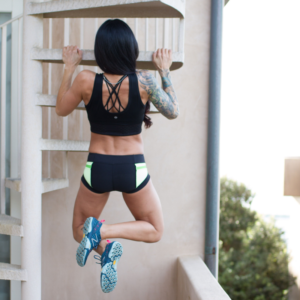
1. Effort: muscles hypertrophy in response to force or stress being placed on them. When the muscle is challenged, either from lifting weights or lifting your own bodyweight against gravity, it’s forced beyond its comfort zone. Over time, muscle will adapt to the stress, which is why we want to mix up our workouts styles regularly to keep them responsive.
2. Tear down: the stress from exercise causes tension that creates micro-tears in the muscle fibers. Some of the stored glycogen in your muscle tissue is used, and some of the proteins that make up your muscle fibers are broken down as well. This is not unhealthy or harmful (unless you are training in a situation where your body is already under stress, not rested, sick, or trying to repair an injury).
Due to the stress (micro tears) in the muscle created from resistance exercise, the immune system responds with a series of reactions that create inflammation. The inflammatory response is necessary to isolate and repair the damage, and clear the injured area of waste byproducts.
In another article, I outlined the importance of not further taxing the immune system with exercise when you’re sick or injured, as it can compromise your immune response and limit your ability to both get better, and build muscle.
3. Repair: finally, your body uses a cellular process to repair the micro-tears in the muscle fibers, and during this process, the muscle fibers fuse together to increase the thickness of the muscle fibers. Your body works to rebuild its glycogen stores, and repair and regrow its muscle protein.
Because exercise creates a certain amount of stress on our system during the tear down process, it’s important to sleep well, eat properly, and take a break when you’re injured or ill. Remember, the cellular process that creates stronger muscle fibers happens when your body is at rest. So to rock a fit physique, your rest days are just as important as your workouts.
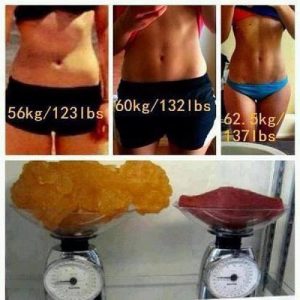
Regular strength training is one of the best ways to define and sculpt a fit physique (6). As you add muscle to your body, not only do you become a more efficient fat burner (as muscle burns more calories due to the increased energy output when a muscle contracts) but you also change the shape (composition) of your body – usually to an aesthetically tighter, more “toned” shape.
While a pound of fat and a pound of muscle both weigh 1 pound, their structure and density are quite different and as a result they take up very different amounts of space in your body.
This volume difference between fat and muscle is exactly why you don’t need to worry about the myth of “bulking up”.
Muscle takes up 4 times less volume than fat, which is why when you add muscle and lose body fat you look and feel more compact — even if the number on the scale doesn’t move.
If you really want to monitor progress, you’re far better off taking progress pictures at regular intervals or using how your clothes fit as a way to keep track of progress.
II. Different Resistance Training Options
1. Bodyweight Training
Your body is a portable gym. No machine, no added weight, just you plus gravity: think push-ups, lunges, squats, etc.
Bodyweight movements allow us to train functionally, meaning these exercises simulate common movements we encounter in daily living (i.e. walking up stairs, reaching, bending/squatting down, etc) and not only give us a strength foundation, but improve our balance, posture and stability as well.
Being able to effectively strength train with your own body is like having a gym everywhere you go, which is exactly why I use this method in the 90 day challenge. You get a total body workout with no equipment at all.
One of the keys to staying consistent is having a workout you can do in any situation, which makes bodyweight workouts so awesome.
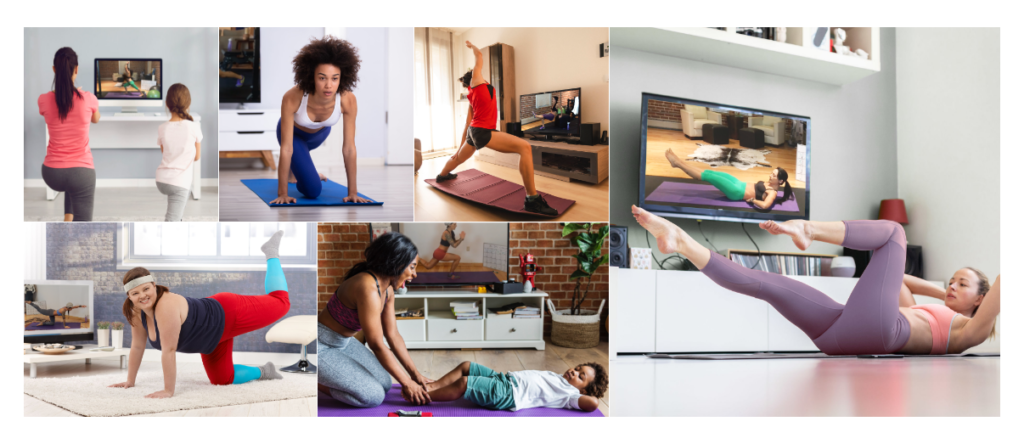
- A bench, chair, ottoman or stairs, which provide an elevated surface to train against, giving you even more leverage for bodyweight moves.
- Exercise balls, also known as “stability balls”, add a destabilization aspect to your training, which recruits more core muscles to help you balance.
- Resistance Bands, whether longer cables with handles or mini bands, are inexpensive, lightweight bands that provide a ‘stretchy’ form of resistance to kick up the intensity of your work out.
- TRX is a well-known fitness strap that is super versatile and you can use it to train virtually every part of your body with no extra resistance than gravity and your own bodyweight. The TRX allows you to put yourself in a variety of positions that recruit your stabilizing muscles.
2. Weight Training
Dumbbells (also called “free weights) are a great way to add load to the body for greater challenge and allow for a deeper contraction to help tone and strengthen the muscles. If you don’t have access to dumbbells, try gallon water jugs, water bottles, or even laundry jugs to simulate the resistance of hand held weights.
One thing I love about simple equipment like dumbbells, an exercise ball and even stretchy bands is you can easily set up your home gym with them. They don’t take up much space, and they can expand your range of options for your home workouts. We use simple equipment like this in Home Workout Domination, my popular 8-week home (or gym) workout program.
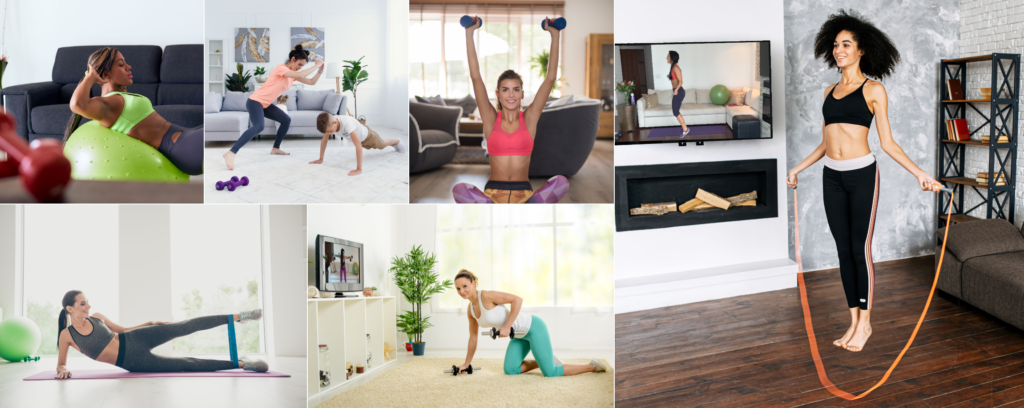
While dumbbells offer you the chance to increase the load as you gain strength, it’s always essential to mind your form while performing any movement. For instance in a biceps curl if you go to heavy too fast, you may notice the tendency of the shoulder to rotate out as you perform the curl, which calls on your back muscles to help. Be sure you’re choosing the right amount of weight to control the movement with good form – in this case, keeping the shoulders back and down in the socket so you can isolate the biceps and not compensate with your back muscles.
- Always bend your knees when picking up and putting down any weighted objects, to protect your back.
- If you’re in the gym, re-rack your dumbbells when you’re done with them, and if there are sanitizing wipes available, wipe off your equipment when you’re finished.
- If you’re not doing back to back sets with your weights, re-rack them so others can use them while you’re using a different piece of equipment.
Barbells and Weight Plates distribute increasingly heavy loads across a wide surface (the bar). A standard Olympic barbell weighs 45 lbs. In some gyms, they may have a 35 and a 45 pound barbell, but generally it will be 45 pounds. It may be more comfortable to move up to using a barbell if you’re able to do squats with two 20-25 lb dumbbells, as they get a little uncomfortable to hold up in your hands as they go up in weight, where the barbell will distribute the load a little better.
Test out your comfort level with the barbell unloaded first, and do some practice moves of your exercise (deadlift, squat, sumo variations, bench press, etc) before adding any weight plates to the bar. Consider having a spotter nearby to help you unload the barbell and set it down.
In my women’s weight training program Lioness, I’ll show you how to start out with more basic equipment like dumbbells so you can build up strength before moving on to barbells. You could begin that program at home with your home equipment, then either upgrade to get heavier equipment (like a barbell and some weight plates) or take your workout to the gym.
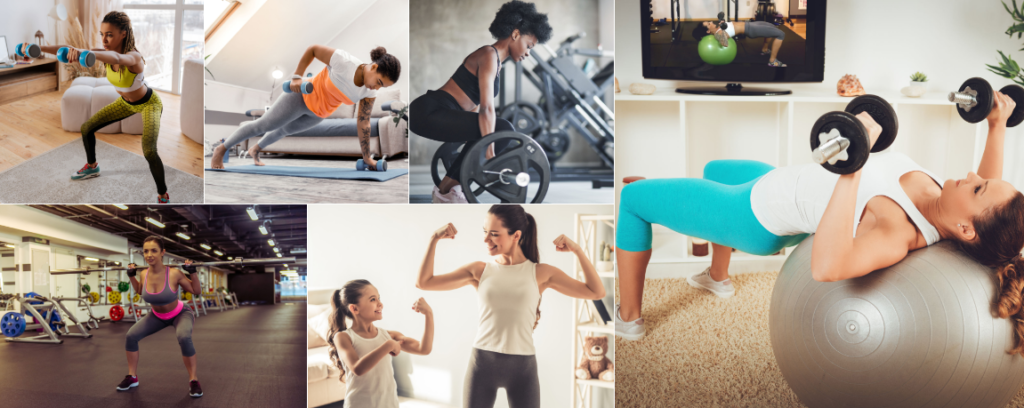
Lioness will give you guided tutorials on using barbells in your workouts, but if you’re not using that program consider investing in a trainer at the gym to guide you through proper set up and movement of the barbell onto and off of your body with good form, so you feel confident.
Do not be intimidated in the gym by equipment you haven’t used, instead just respect the amount of knowledge and skill you have currently, and go right ahead and seek the guidance of someone who has something to teach you.
- When you’re in a crowded gym and you get access to an area and a dumbbell, consider doing all of your working sets of that exercise back to back, even if the workout is written with other exercises in the circuit in an effort to free up the equipment for others.
- For example, if you have a workout that has “3 rounds of Squats, Walking Lunges, and Push Ups”, consider doing all of your squats first (taking adequate rest in between) and then moving on to all sets of the lunges and then all sets of push ups.
Weight Machines provide resistance for specific parts of the body allowing you to isolate muscle groups. One of the key differences between weight machines and dumbbells and barbells is that with the weight machine, you’re locked into a position which allows just the muscle you’re training to fire. This doesn’t happen in real life, but it’s a fun way to really target and isolate muscles. With the free weights and barbells, you have to recruit stabilizing muscles, even as you train specific muscles.
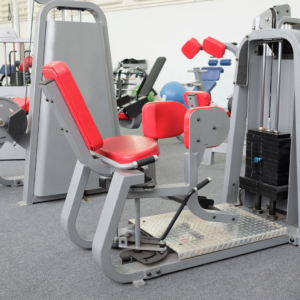
One size does not fit all, and while weight machines come with a lot of adjustment options, it’s easy to get injured or strain yourself too far in the wrong direction if you’re not careful. Since I’m 5’1″ I find that some equipment in the gym doesn’t fit very well to my body, so I like to test it out with a very light resistance to make sure I feel secure before adding anything significant to push against.
This is a good rule of thumb with any type of equipment you’re using for resistance training: start out light, check your form first, and then add load. If you go too heavy too fast, you can easily injure yourself and then you have to take a break from training – which will not make you happy.
- In a busy gym, other people may be doing circuits on the machines, and you may return to your machine to find the settings for your height and amount of resistance have been changed.
- Always note where you left off, so you can reset the machine and get right back to your session.
III. What’s the best way to train?
The best way to train is the way that’s available to you, fun for you, and that you actually do. I always say the best workout is the one you do!
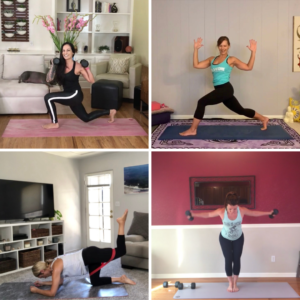
While you can of course get stronger and stronger adding more load, you have to start out with a strong foundation to build on. I recommend building a base of bodyweight strength, balance and flexibility and then even if you start weight training continuing to incorporate bodyweight exercises into your training for all the benefits they offer.
It might not always be convenient to go to the gym, and I recommend investing in some home workout equipment as you build your base. Build your home gym equipment options up slowly, and as you have need of them. For instance, if you’ve been feeling strong in your bodyweight squats, invest in some dumbbells so you can add extra resistance.
I started with an exercise ball and some dumbbells, and then as I got stronger, I decided to invest in a squat cage and some barbells and weight plates. Now, years into it I have a full “garage gym” set up. But that’s not how I started, and I wouldn’t have needed all those options in the beginning.
As you get stronger, you’ll often want more options and equipment. And that might mean a gym membership is the best option. I created an online home gym option (called Rock Your Life) for women who want to train at home, and we offer a variety of classes that incorporate everything from no equipment (HIIT circuits, yoga, barre and pilates) up to home workout equipment (strength circuits and resistance training).
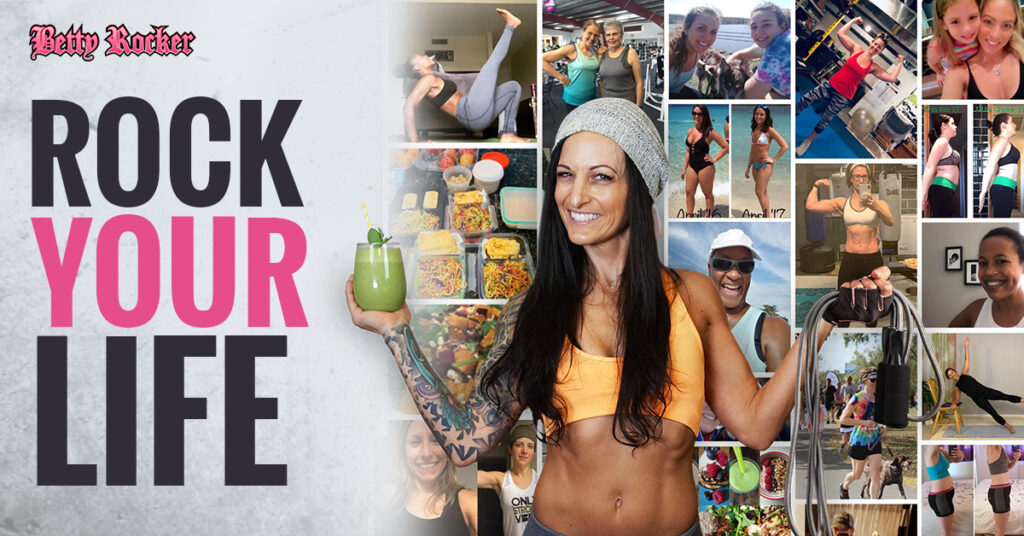
Personally, I like using all the options available to me. I’ve been training regularly for years, and as a coach and trainer I’m in the “advanced” category at this point. I do a variety of both bodyweight workouts and weight-training workouts throughout the week. My bodyweight workouts help me maintain my cardiovascular capacity, stabilizing and balance muscles, core strength and overall strength. My resistance training sessions are focused on progressive overload and key lifts that help me increase muscle mass.
I don’t typically train in a gym (unless I’m traveling) or use weight machines but I love the options when I’m in a gym and enjoy mixing it up. It’s just more convenient for me to train at home. There isn’t “one right way” to train, the most important thing is that you start exercising, find a way to make it regular and consistent, and add variety to your workouts as you progress your strength.
IV. Training Tips
1. Warming up
This can be as much mentally beneficial as it is physical. It can be a transition from what you were doing before your workout to getting psyched about your session.
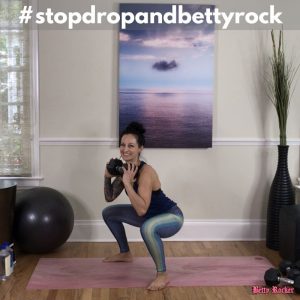
With a bodyweight workout, you can use your first round or your first few moves as your “warm up,” running through the moves at a slower pace, or even performing a couple of simple bodyweight exercises to get your blood moving.
When it comes to lifting weights, it’s important to increase the blood flow to the muscles you’re planning to train by performing reps at a lighter weight than your working set, and warming up your entire body at the start of your workout (think jumping jacks, elevated push ups, jump rope, etc).
Lifting on stiff or “cold” joints and muscles will make it harder to move, and you’ll increase the risk of injury. An increased blood flow to your muscles means they’ll respond and recover much quicker (7).
In the workouts I teach, I often use the first set as a warm up, either by going over the form more deliberately, going more slowly and doing some of the moves with different levels of intensity. I always do this whether I’m teaching or working out by myself and I think it’s a huge part of why I don’t get injured.
If you find yourself getting impatient with the instructor’s use of that time, or explanation of the moves, just use the time to do some free-form movement yourself and listen as you move. If you are feeling impatient because the workout isn’t starting fast enough, slow down. Let yourself get into your body and your form.
2. Pay Attention to Your Form
Be especially mindful of your form always, and especially as you add weight to your routine. It’s better to do less reps with excellent form than more reps poorly. Listen to your body, and use a mirror whenever you get the chance so you can check your position – are your joints aligned? Are you engaging your core? Are your hips square?
Your form in setting down and picking up weights or getting on and off of equipment is just as important as the way you’re performing the exercise. Be mindful of your body and alignment in any movement you do.
Go through my free Foundations of Functional Fitness Workshop for daily 15-minute videos that will teach you squat form, lunge form, the foundations of the rotator cuff so you can keep it safe, and so much more.
3. Choose An Appropriate Amount of Weight For YOU (if you’re using weights)
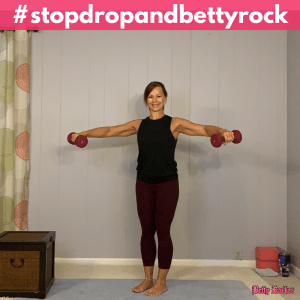
Knowing what amount of weight to choose depends on where you’re starting and where you want to go. If you’re a beginner, a great way to “test” what the right amount of weight to use for a given exercise is to use a range of 8-12 repetitions (aka “reps”). If you can barely do 6 reps, try a slightly lighter weight. If you can do 15 easily, try a slightly heavier weight.
Different muscle groups can handle different amounts of resistance. For example, your legs and glutes can handle much heavier loads than your arms and shoulders can typically.
You’ll find that different programs will have you do shorter or longer rep ranges, depending on what the goal is. One way isn’t the “right way” – try out different things and see what you enjoy. Your muscles like variety, so don’t be afraid to mix it up.
A study done in 2016 showed that increasing reps or increasing weight both resulted in greater strength. So as long as you are varying your workouts, reps, and weight and reaching fatigue, you will increase muscle strength (8). I use a progressive overload approach in Lioness for example, where we intentionally track our reps each week with the intention to either increase our reps or increase our weight. You can apply this principle in any training program as you get stronger.
Safety first: It’s exciting to start a new program, but pace yourself in the beginning as you build strength.
Doing too much too fast puts you on the fast track to getting hurt, so think steady and consistent, and allow yourself time to get into a new program or training style, especially if you’re brand new to lifting weights.
4. Cooling Down and Stretching
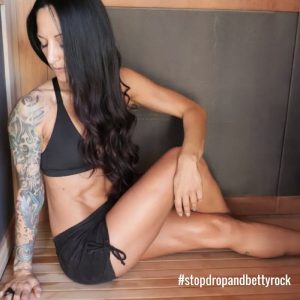
After a workout while your muscles are warm is a great time to stretch. Stretching improves mobility around your joints, and also helps bring your heart rate back to normal after exertion. You can also do something simple like walking for a few minutes, and/or hop on a foam roller.
Here is my guide to stretches broken down into short videos by body part.
Here is a full body stretching guided video.
You may also want to use something like a theragun (percussion tool to increase blood flow and release muscle tissue) or any self-massaging tool.
Whenever you have the opportunity, work with a trainer, physical therapist, chiropractor or structural integrationist who can help keep your bones and muscles working together with proper alignment.
5. Take Adequate Rest
Muscle grows when you rest – not during your training. The fitness hormone, HGH is most powerfully produced while you’re sleeping (9). If you’re lacking quality and quantity in your sleep, your body will miss the valuable time it takes to repair and will result in decreased strength and increased fat (10).
So while the number of rest days depends on your training, taking your rest days is an essential piece to reaching your goals, no matter what they are. As always, pay attention to what your body is telling you.
BONUS PRO TIP…..Be Patient.
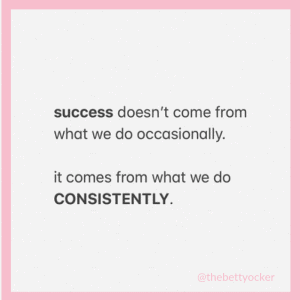
Read more about how muscle works in THIS POST to understand hypertrophy.
Read more about the importance of dietary PROTEIN in THIS POST.
Listen to why muscle is the organ of longevity and learn from Dr. Gabrielle Lyon in THIS PODCAST EPISODE.
I know waiting to see progress when you want it right NOW can be tough, but it’s so worth it, and the discipline and consistency you apply to your training can be a practice that you apply to many other aspects of your life as well.
Transform your physique by adding regular resistance training – bodyweight style, with weights or machines – and uncover those strong, lean muscles.
And do yourself a favor by giving your body the quality nutrients and energy it requires to perform at its best and get everything you can out of your workout.
When you combine proper nutrition with your workouts, the results are unbelievable. It’s SO WORTH IT.
Which workout program is right for you? Take the quiz to find out!
- American Physiological Society. “Varying Weight Training Intensity Increases Growth Hormone In Women”. Science Daily. Web. Dec 2006. https://www.sciencedaily.com/releases/2006/12/061201105951.htm
- Ayyar, Vageesh S. “History of growth hormone therapy.” Indian journal of endocrinology and metabolism. Web. 2011. https://www.ncbi.nlm.nih.gov/pmc/articles/PMC3183530/
- Kovaceniv A, et al. “The effect of resistance exercise on sleep: A systematic review of randomized controlled trials”. Sleep Medicine Reviews. Web. June 2018. https://www.ncbi.nlm.nih.gov/pubmed/28919335
- Wayne L. Westcott. “Resistance training is medicine: effects of strength training on health”. Current Sports Medicine Report.Web. 2012 Jul. https://www.ncbi.nlm.nih.gov/pubmed/22777332
- Strickland, Justin C, and Mark A Smith. “The anxiolytic effects of resistance exercise.” Frontiers in psychology. Web. July 2014. https://www.ncbi.nlm.nih.gov/pmc/articles/PMC4090891/
- Willis, Leslie H et al. “Effects of aerobic and/or resistance training on body mass and fat mass in overweight or obese adults.” Journal of applied physiology. Web. Dec 2012. https://www.ncbi.nlm.nih.gov/pubmed/23019316
- F. G. Shellock, W. E. Prentice. “Warming-up and stretching for improved physical performance and prevention of sports-related injuries”. Journal of Sports Medicine. Web. July 1985. https://www.ncbi.nlm.nih.gov/pubmed/3849057
- Robert W. Morton, et al. “Neither load nor systemic hormones determine resistance training-mediated hypertrophy or strength gains in resistance-trained young men.” Web. July 2016. Journal of Applied Physiology. https://www.ncbi.nlm.nih.gov/pubmed/27174923
- Richard J. Godfrey, Zahra Madgwick, Gregory P. Whyte. “The exercise-induced growth hormone response in athletes”. Journal of Sports Medicine. Web. 2003. https://www.ncbi.nlm.nih.gov/pubmed/12797841
- E. Van Cauter, L. Plat. “Physiology of growth hormone secretion during sleep”. Journal of Pediatrics. Web. May 1996. https://www.ncbi.nlm.nih.gov/pubmed/8627466
